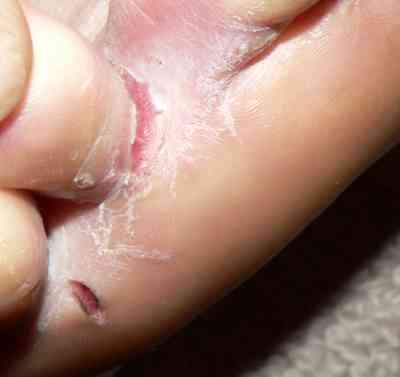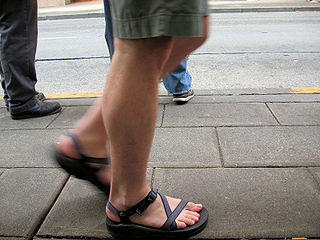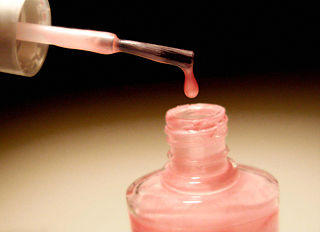9 Tips for Toe Fungus Treatment and Prevention
Be it on the toe, the toenail or between the toes, a fungal infection is common and fairly difficult to cure. The problem with toe fungus is that it tends to recur – once you have it the chances are pretty good that you will get it again. It is commonly thought to be a problem with hygiene but even if you are obsessive about your personal hygiene, a fungal infection of the toes can still occur. But there is no need to live with it. A toe fungus is easily treated and somewhat preventable. There is just no guarantee that it will not recur again within weeks, months or even years later.
Why does fungus prefer the toes?
Toe fungus is part of a fungal infection of the feet. Medically it is known as tinea pedis but most of us refer to it as athlete’s foot. The web of the toes and toenails are commonly affected areas as compared to other parts of the feet. Athlete’s foot is caused by dermatophytes, a group of fungi that only infects the outer layers of the skin. The fungi have special enzymes that can “dissolve” the tough protein of the outer skin and nails known as keratin and feed on it.
However, it is not just the food source that helps the fungi thrive – it also needs the ideal environment. And the feet are the perfect location. Soak a slice of bread with water. Place it in a dark cupboard near the kitchen stove. In a few days you will find a fungus growing on the surface of the bread – what we commonly call bread mold. This is a common feature of fungi – it tends to thrive in warm, dark and moist environments. The same applies to a toe fungus. The feet are the perfect setting in this regard, especially in a world where we tend to use closed shoes.

Picture of a severe toes fungus from Wikimedia Commons
Sweat provides the moisture. The body heat is the source of constant warmth especially when it is fully covered. Socks and shoes shield the light thereby keeping the area dark. Very few areas apart from the feet and groin can provide such an ideal mix of factors for skin fungi to thrive. But these fungi are not as tough as they may seem. It is unable to infect deeper layers of the body because the immune system can easily eradicate it. Unfortunately the immune system is somewhat limited by the barrier formed by the outer layers of skin. So the fungus stays on the external surfaces where it can thrive.
Drugs That Destroy The Fungus
There is a wide range of antifungal medication that is very effective in destroying the toe fungus. Some are applied on the skin in the way of creams, gels, lotions, powders and solutions. These topical applications may be available over-the-counter or with a prescription. For more persistent and severe infections, your doctor may prescribe oral antifungal agents in the form of capsules or tablets. Not only will these drugs treat a toe fungus, it can also prevent it from recurring for a period of time. But the protection is not permanent.
Herbal Remedy for Toe Fungus
Tea tree oil, an extract from the Melaleuca alternifolia plant, is a well known herbal remedy for fungal infections of the skin. Various studies have verified the effectiveness of tea tree oil in treating athlete’s foot when used as an undiluted or diluted solution or in a cream. It was even comparable to some modern antifungal drugs. Tea tree oil may cause some degree of skin irritation (dermatitis) depending on the concentration used. Therefore it should not be used continuously as a preventative measure.
Keep Your Feet Dry
Moisture is one of the essential environmental factors for fungal growth. Keeping your feet dry is therefore an important way to keep the toes fungus at bay. Try using socks made of natural materials that absorbs the sweat on your feet. Just as important is properly drying you feet after having a bath. Use a towel or even an electric hair dryer to remove all moisture from between the toes. If you are in a situation where your feet will get wet, use protective footwear that is waterproof or dry your feet thoroughly once you come out of the water.
Wear Open or Ventilated Shoes

A simple way to remove the heat and darkness from the foot area is to wear open shoes or foot wear that will allow some degree of light and ventilation. Remember that warmth and darkness is just as important for the toe fungus to thrive. As far as possible, go barefoot especially when you are indoors. Let the feet air thoroughly if you had to wear shoes all day at work. But be careful about treading outside barefoot. Injury from twigs and stones may break the skin and allow fungal spores in the soil to infect the foot.
Change Sock and Shoes Frequently
The fungus on your foot can also reside for short periods of time on your footwear like socks and shoes. It can even form spores and adhere to surfaces when the environment is not ideal for its growth. For this reason it is important change your socks and shoes frequently. Even if you wash your socks thoroughly everyday and try to air out your shoes, eventually the fungus or its spores would have contaminated your footwear. It therefore needs to be discarded and replaced with new footwear if you are suffering with a persistent toes fungus.
Do Not Share Footwear
Fungal infections spread quickly from one person to another. Never share your socks or shoes with any person even if they do not appear to have a fungal infection. Even wearing another person’s footwear for just a few hours can be sufficient to transfer the fungus onto your skin. Sometimes trying out shoes in a store may be sufficient to infect your feet. Although the fungal spores are widely prevalent in the environment, it is more likely to be concentrated in the footwear of a person with a toe fungus. You will not be able to see or smell the fungus in footwear. Rather be safe and not share footwear.
Avoid the Nail Polish

Acrylic nail fungus is a well known condition and it is not limited to your fingers. It is not only the use of artificial nails that are a problem. Nail polish on its own can weaken your nails and irritate the surrounding skin. This may give the fungus an opportunity to infect the nails and toes. If you are having a problem with a persistent toe fungus, try stopping the nail polish and professional pedicures for a few months. Keep your nails short and natural but avoid the little cosmetic extras.
Treat Skin Problems
A fungus is more likely to infect the skin when it is injured or diseased. Normally the skin forms a relatively impermeable environment to microbes. But once its integrity is compromised, microbes will quickly invade the area. Even little cuts can be a problem. Keep the area clean if you have a break in skin and use open shoes while the cut heals. Monitor the area carefully for the start of any fungal infection so that you can treat it quickly. People suffering with skin diseases need to seek professional medical treatment as a secondary fungal infection is always a risk on the feet.
Protect Your Feet
Although closed shoes promotes the growth of a toes fungus, going barefoot in certain places can be just as much of a problem. If you use public facilities like a shower or swimming pool, then try not to make direct contact with the floor. The same fungi that infects human skin can reside in wet areas, especially if it is used by many people. But it can be just as much of a problem at home if one of the residents has a toe fungus. While cleaning the shower floor at home with strong disinfectants may do the trick, the same may not apply to a public facility. To avoid picking up a toe fungus infection, use rubber sandals while you are in the shower or walking around the pool.





